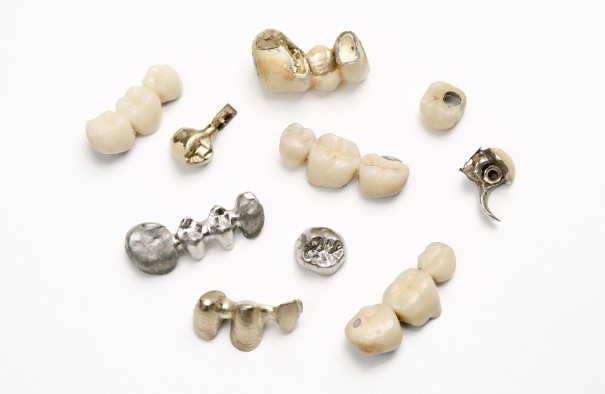For decades, dental inlay have been a trusted solution for restoring teeth damaged by decay or fractures. However, traditional methods like composite fillings or lab-fabricated ceramic inlays often come with challenges—long wait times, compromised aesthetics, or suboptimal durability. Enter 3D printing technology, a game-changer in modern dentistry. By combining precision, speed, and customization, 3D-printed dental inlays are transforming how dentists approach restorative care.
This article explores how 3D printing elevates dental inlay treatments, offering patients faster, more accurate, and cost-effective solutions.

Why 3D-Printed Dental Inlay? Key Advantages
- Precision Meets Personalization
Using intraoral scanners (e.g., Medit i700 or 3Shape TRIOS), dentists capture detailed 3D models of a patient’s tooth. CAD software then designs an inlay that perfectly matches the cavity’s shape and bite alignment. Unlike traditional methods, 3D printing eliminates human error, ensuring edge-to-edge fit and minimizing microleakage risks. - Faster Turnaround, Fewer Visits
Traditional lab-made inlays require days to fabricate, forcing patients to wear temporary fillings. With chairside 3D printing, a permanent inlay can be designed, printed, and bonded in under two hours. This “same-day dentistry” approach enhances patient satisfaction and clinic efficiency. - Superior Material Choices
3D-printed inlays use biocompatible resins optimized for strength and aesthetics. Materials like ceramic-filled resins offer:- High wear resistance (ideal for molars).
- Natural tooth-like translucency.
- Reduced shrinkage during curing.
- Cost-Effective for Clinics
Dental LCD 3D printers (e.g.,Mini Giant Pro 9k) are far more affordable than industrial CAD/CAM milling machines. Resins also generate less waste compared to ceramic blocks, making 3D printing a budget-friendly option for small practices.
The 3D Printing Workflow: From Scan to Smile
- Digital Scanning
An intraoral scanner creates a precise 3D map of the prepared tooth and surrounding anatomy. This data is exported as an STL file for CAD design. - CAD Design
Software like Exocad or DentalCAD tailors the inlay’s shape, thickness (1.5–2mm recommended), and occlusal contacts. The design prioritizes minimal tooth preparation and optimal fit. - 3D Printing
Using LCD or DLP printers, the inlay is layer-cured (50μm layer height) from dental resin. Post-printing steps include:- Ultrasonic cleaning in IPA.
- UV curing for enhanced strength.
- Polishing for a smooth, natural finish.
- Bonding
The inlay is adhesively cemented, requiring minimal chairside adjustments.
3D Printing vs. Traditional Methods: A Clear Comparison
| Factor | 3D-Printed Inlay | Composite Filling | CAD/CAM Milled Inlay |
|---|---|---|---|
| Precision | ⭐⭐⭐⭐⭐ (Digital accuracy) | ⭐⭐⭐ (Manual-dependent) | ⭐⭐⭐⭐⭐ (High-precision milling) |
| Durability | ⭐⭐⭐⭐ (Wear-resistant resins) | ⭐⭐ (Prone to shrinkage) | ⭐⭐⭐⭐⭐ (Ceramic strength) |
| Aesthetics | ⭐⭐⭐⭐ (Natural color match) | ⭐⭐⭐ (May discolor) | ⭐⭐⭐⭐⭐ (Porcelain-like finish) |
| Cost Efficiency | ⭐⭐⭐ (Low equipment cost) | ⭐⭐⭐⭐⭐ (Cheapest) | ⭐⭐ (High lab fees) |
Who Benefits Most from 3D-Printed Inlays?
- Patients seeking same-day fixes: Ideal for busy individuals.
- Moderate decay cases: Perfect for premolars or small cavities.
- Aesthetic-conscious patients: Resins blend seamlessly with natural teeth.
Limitations: For high-stress molars or patients with bruxism, ceramic inlays remain the gold standard due to their unmatched durability.
Real-World Case: A Faster, Smoother Solution
A 28-year-old patient with moderate decay in tooth #16 received a 3D-printed resin inlay. The process took 90 minutes from scan to bonding. Post-treatment, the patient reported:
- No sensitivity: Thanks to the precise fit.
- Natural feel: The inlay matched the tooth’s contour and bite.
- Zero follow-up visits: No adjustments were needed.
The Future of Dental Inlay
3D printing is democratizing access to high-quality dental restorations. As resins evolve to match ceramic longevity, this technology will likely become the norm—not just an alternative. For clinics, investing in 3D printing means:
- Reduced overhead costs.
- Enhanced patient trust through cutting-edge care.
- Streamlined workflows.
Conclusion
3D-printed dental inlay represent the perfect synergy of innovation and practicality. They address the shortcomings of traditional methods while delivering precision, speed, and patient-centric results. For dentists aiming to future-proof their practice, adopting 3D printing isn’t just an option—it’s a strategic advantage.
Ready to embrace the future of dental restorations? Explore how 3D-printed inlays can elevate your clinic’s offerings today, IFUN temporary crown resin.

